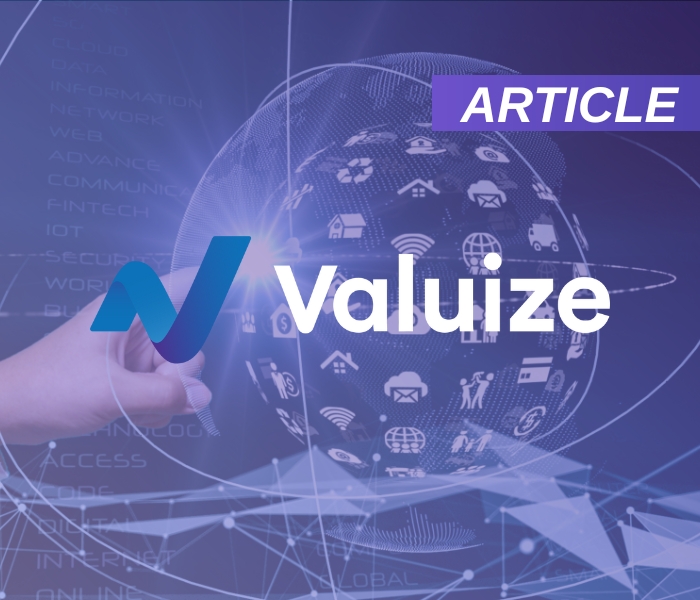For the C-Suite of Today’s Competitive B2B Technology Landscape:
Feature-driven product development is no longer enough. Today’s B2B Technology customers demand tangible, measurable outcomes. As a C-suite leader, your success hinges on defining and delivering these outcomes. AI is not just an enabler—it’s a strategic necessity for driving customer value, retention, and revenue growth
Moving Beyond Features: The Outcome-Centric Imperative
Your sales and marketing teams tout the benefits of your platform. But post-sale, are you able to articulate and prove the specific outcomes your solution drives? Vague promises are insufficient – Customers expect concrete results: increased efficiency, cost reduction, revenue growth, or improved market share.
At Valuize, we advocate for prescriptive, measurable outcomes tied directly to product adoption and value realization. We call these ‘Value-Based Outcomes’—the foundation of an integrated customer lifecycle strategy. AI unlocks a new level of precision in defining, tracking, and proving these outcomes, ensuring they drive real customer impact.
AI: Your Strategic Ally in Outcome Identification and Definition
AI empowers you to move beyond anecdotal evidence and subjective interpretations. By harnessing the power of machine learning and data analytics, you can gain a granular understanding of how your product impacts your customers’ businesses.
Here’s how AI is transforming outcome identification and definition:
- Data-Driven Insights: AI algorithms can analyze vast datasets from CRM, product usage, and customer feedback platforms to identify patterns and correlations that reveal the true impact of your solution. This eliminates guesswork and provides a clear, data-backed understanding of the outcomes that your products and services provide.
- Predictive Analytics for Proactive Engagement: AI can forecast customer behavior, allowing you to anticipate potential churn, identify upsell opportunities, and proactively address customer needs. This translates to improved customer retention and increased lifetime value – and provides insights regarding what outcomes impact retention when achieved and realized by the customer, or missed.
- Personalized Customer Experiences: AI enables the delivery of tailored experiences, optimizing product usage and maximizing value for each customer segment. This fosters stronger customer relationships, drives higher satisfaction rates, and allows you to tailor messaging to what outcomes will be most impactful to that customer. Additionally, understanding how your customers interact with your messaging provides valuable insights regarding what matters to them most, or where human intervention may help to guide the customers understanding of value.
- Automated Outcome Measurement: AI automates the process of extracting insights from data, freeing up your team to focus on strategic initiatives. This enables continuous monitoring and optimization of your product’s performance, and provides you with the insights to drive action, and continuously improve your customer outcome framework.
AI removes the ambiguity in defining customer success. Companies that fail to use AI for outcome measurement risk failing behind competitors that can quantify and prove their impact.
Practical Steps for Embedding AI in your Outcome Delivery
As an executive, you’re not just strategizing; you’re driving action. Here are practical ways to implement AI-driven outcome identification:
Align Teams Around AI-Driven Outcome KPIs:
- Action: Form a cross-functional team (Product, Marketing, Sales, Customer Success, Data Science) to define key performance indicators (KPIs) that directly reflect desired customer outcomes. Use AI to analyize existing data related to KIPs like churn/loss, expansion, NPS, CSAT, and engagement behaviors to generate discussion and validate your assumptions.
- Example: If your SaaS platform aims to improve sales efficiency, KPIs might include “reduction in sales cycle time” or “increase in lead conversion rates.”
- Result: This council ensures alignment across departments and creates a shared understanding of what constitutes success.
Use AI to Optimize Product Features for Customer Impact:
- Action: Implement tools like like Gainsight PX or Pendo to track granular user behavior within your product. Integrate these with your CSP and CRM to correlate product usage with customer success metrics.
- Example: Use AI to identify which feature combinations correlate with higher customer retention or faster time-to-value.
- Result: Provides data to the product team to optimize the product roadmap around features that have the greatest impact on customer outcomes.
Predict and Prevent Churn with AI-Powered Customer Health Scoring that incorporates Outcome measures:
- Action: Leverage AI to create a dynamic customer health score that considers product usage, engagement, and support interactions, and create a closed-loop of feedback to Sales, Marketing, Product and Engineering based on scoring trends
- Example: A customer with declining usage and increasing support tickets triggers an alert for proactive intervention from the customer success team.
- Result: This enables proactive customer success initiatives, reducing churn and increasing customer lifetime value, while sharing powerful insights across the organization for continuous improvement of the product, messaging, and outcome framework.
Make AI Insights a Core Pillar of Strategic Decision-Making:
- Action: Regularly review AI-generated insights with your leadership team and use them to inform strategic decisions related to continuous improvement of your outcome framework, value cycle, and team enablement.
- Example: Use AI-driven churn prediction to inform resource allocation for customer success initiatives, product development, sales tactics and messaging.
- Result: Embeds AI as a core component of strategic planning and execution, fostering a culture of continuous improvement and data-driven decision-making.
The Bottom Line: Driving Revenue Through Outcome Optimization
By leveraging AI to identify and deliver measurable outcomes, you can:
- Enhance Customer Retention: Prove the value of your solution and build stronger customer relationships.
- Increase Upsell and Cross-sell Opportunities: Identify high-potential customers and tailor your offerings accordingly.
- Optimize Marketing and Sales Strategies: Create targeted campaigns and improve conversion rates and set customer expectations up front.
- Gain a Competitive Advantage: Differentiate your company by demonstrating a clear commitment to customer value.
AI isn’t just an efficiency driver—it’s your key to proving and optimizing customer value at scale. By embedding AI in your outcome framework, you create a competitive advantage that drives retention, expansion, and revenue growth. The future of B2B Technology belongs to those who can define and deliver measurable value. Will you lead the way?






